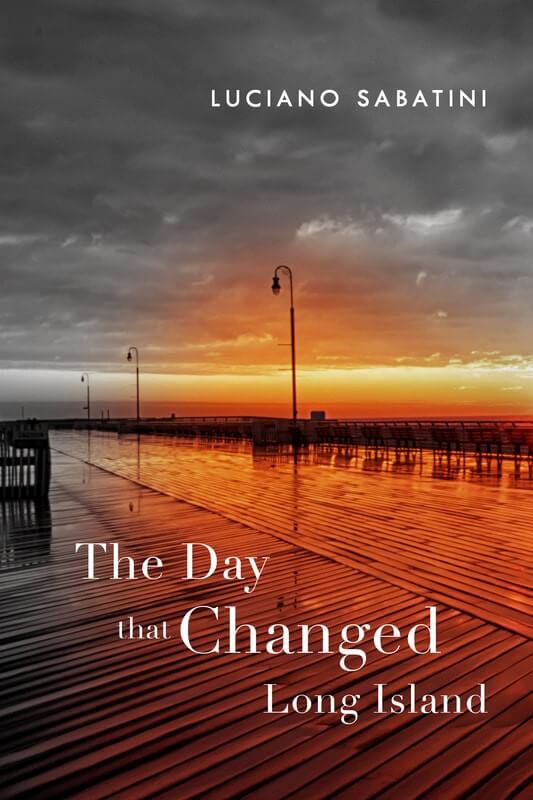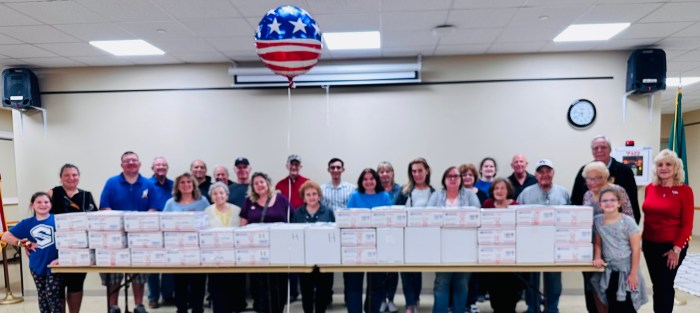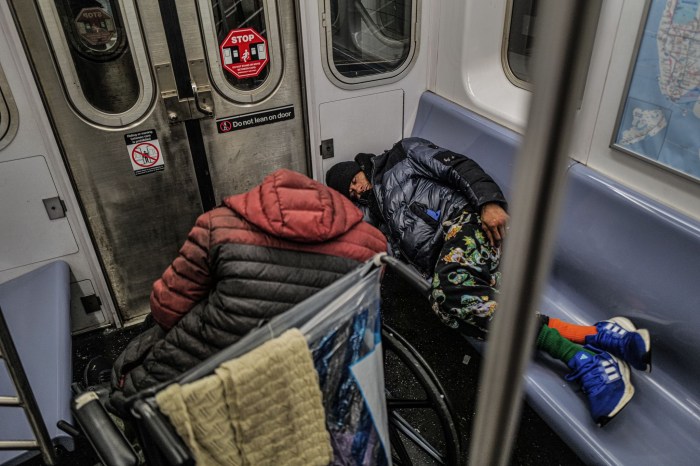Former Massapequa resident pens fictional account based on personal experience

When Super Storm Sandy made landfall on Long Island on October 29, 2012, it was the strongest hurricane of the 2012 Atlantic hurricane season and wound up inflicting nearly $70 billion in damage. The South Shore was hit especially hard, particularly Massapequa residents that lived on the water south of Merrick Road. Luciano Sabatini was one of those residents whose traumatic experiences inspired him to write the recently released The Day That Changed Long Island. This piece of historical fiction uses a thinly veiled semi-autobiographical book informed by the Sabatini family’s trials and travails in navigating Sandy’s aftermath.
“I was very traumatized by [Super Storm Sandy],” Sabatini said. “As the book states, the prior year we had Tropical Storm Irene. And while that did a lot of damage in places like Upstate New York and Vermont—small streams became rivers and other kinds of destruction—there was very little damage down here. When my wife and I heard Super Storm Sandy was coming, we thought about how much preparation for Irene we did the prior year in moving furniture and everything else. We decided we weren’t going to do it again and figured it was going to be another exaggerated weather event by the media. We were completely shocked with what happened. We’d been through Hurricanes Irene and Gloria along with other storms, but never saw anything like this. It was otherworldly. When we realized what Sandy was going to entail, we were stuck in our house. We had to watch this thing and it was kind of scary.”
 The Sabatinis lived in a split-level ranch on West End Avenue in Massapequa. Flooding from the Great South Bay totaled the Sabatini’s basement with items like computers and other electronic equipment getting destroyed along with the family’s three cars. The aftermath left lasting damage ranging from salt left over from the seawater that inundated the family’s plants, lawn and garden to the entire first floor’s drywall having to be ripped out down to the studs to avoid any mold infestation. Topping it off was the enormous expense and red-tape involved with getting financial aid to renovate the house, all the while spending the first three weeks of November living with no hot water, electricity or heat.
The Sabatinis lived in a split-level ranch on West End Avenue in Massapequa. Flooding from the Great South Bay totaled the Sabatini’s basement with items like computers and other electronic equipment getting destroyed along with the family’s three cars. The aftermath left lasting damage ranging from salt left over from the seawater that inundated the family’s plants, lawn and garden to the entire first floor’s drywall having to be ripped out down to the studs to avoid any mold infestation. Topping it off was the enormous expense and red-tape involved with getting financial aid to renovate the house, all the while spending the first three weeks of November living with no hot water, electricity or heat.
“We had one battery-powered radio,” the father of three adult children recalled. “Cell phones weren’t quite working and were inconsistent. You couldn’t get through to the power company because they were inundated with complaints from hundreds of thousands of people. Ninety percent of Long Island didn’t have power. That was frustrating. Then trying to get the FEMA representative to come and appraise your house so you could know how much of a reimbursement you could get to fix your house. Every day was a challenge, slow and grueling. It was especially frustrating because north of Merrick Road, there was very little damage. They lost power for maybe four or five days or a week maybe.”
Sabatini, a Hofstra University adjunct professor who teaches graduate courses in bereavement and group counseling to students in mental health programs, started The Day That Changed Long Island during the pandemic. As the author of three other nonfiction books, this latest creative undertaking proved to be a challenge. A course the Argentinian native took at C.W. Post on writing fiction proved to be helpful when he embarked on this project that took close to a year to complete.
“There’s a big difference between writing fiction and nonfiction,” he said. “To me, fiction is a lot more demanding because with nonfiction, you’re just writing about what happened. With fiction, there’s character development and showing not telling. It required a lot of work.”

(Photo courtesy of Luciano Sabatini)
Among the takeaways Sabatini had in completing this book was how a crisis like this reflects on the people going through it.
“Human nature really came across here-both the goodness and greed of people,” Sabatini explained “It was a constant theme throughout. People seem not so different in an everyday situation, but in a crisis situation they reveal their true colors. The people who are greedy come out and the people that are really kind—you see that they really try to help their neighbors. That one scene where people were waiting in line in their cars waiting to buy gas and this guy pulled up out of nowhere and started filling up his car with no regard to all these people waiting on line. Those kinds of things happen all the time.”
He was also surprised to find out from his daughter that a fellow teacher she worked alongside was still enduring the fallout from Sandy nearly a decade later. After speaking with the woman, it inspired him to change her name and add the her story to the end of the book. As he points out in the book’s afterward, “As of this writing, the Storm Recovery of the Governor’s Office reports that New York Rising accepted 10,261 applications for home repairs or elevations on Long Island. Of these, 363 cases in Nassau County and 130 in Suffolk County are still not completed.” It’s a situation he still can’t fathom.
“There are people who never recovered from this and never moved back into their homes,” Sabatini said. They have no voice, because politicians don’t want to have to be dealing with their failures. There are so many people that are still suffering and we don’t even know about it.”































